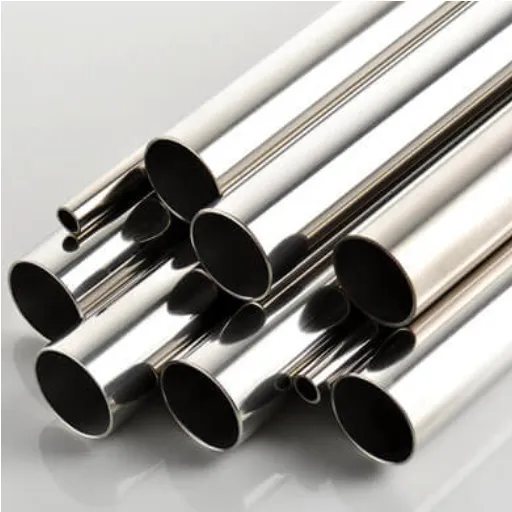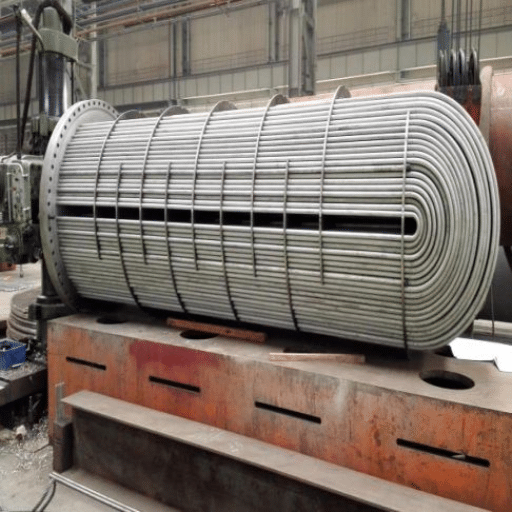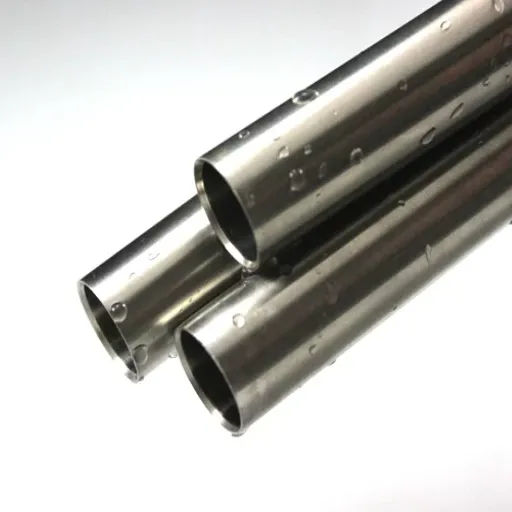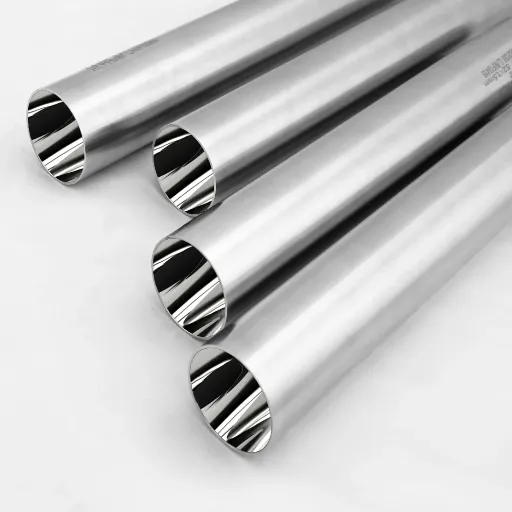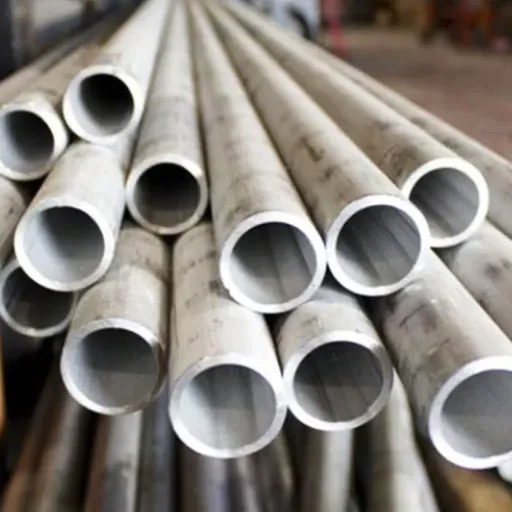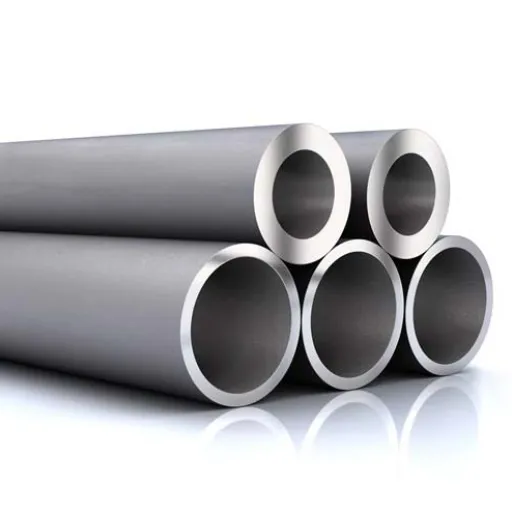Bright annealed tubing has become a critical technical material for the case of precision engineering and high-performance applications. It is well known for its astonishing durability, smooth seamless surface, and corrosion resistance; thus, this type of stainless steel tubing is a must-have in sectors like aerospace and pharmaceuticals. However, what is bright annealing and why has it become so popular in the industry? This article is going to highlight its uniqueness through its qualities, production process, and applications. It does not matter if you are a professional looking for materials for your next project or just a curious person about the modern manufacturing technologies, this guide is going to offer you very useful information about the bright annealed stainless steel tubing world.
What is Bright Annealed Tubing?

Definition and Characteristics
Bright annealed tubing is the product of an exceptional annealing process applied to stainless steel tubing. The tubing gains its unique features through an elaborate heating in an inert atmosphere that stops any form of oxidation and reaches high temperatures at the same time—thereby changing the microstructure of the material. What you get is a bright and smooth surface with a good deal of reflective finish and greater resistance to corrosion.
Surface Finish Quality and Polish
The surface finish quality of tubing not only influences but rather determines its performance and longevity in various applications. The smoothness and shining of the surface give the tubing a very nice look and at the same time, the building up of contaminants is made difficult which is quite important in industries like pharmaceuticals and food processing. The data that has just been released says that a good polish will cut down friction very much and thus lead to the quick and easy cleaning of the tubing and the quality of the flow is also going to be good, all this thereby ensuring that the strict industry standards are met. These quality features render polished tubes as the only possible choice for those demanding environments where not only hygiene but also accuracy are top priorities.
✨ Surface Finish Advantages
- Reduced Contamination Risk: Smooth surface prevents bacterial buildup and contaminant adhesion
- Lower Friction: Enhanced flow characteristics and easier cleaning processes
- Aesthetic Appeal: Mirror-like finish suitable for visible installations
- Compliance Ready: Meets strict pharmaceutical and food safety regulations
Comparing Bright Annealed Tubing to Other Types of Tubing

Seamless vs. Welded Tubing
Tubing seamless and welded, although serving different purposes, and providing different advantages, can be used in various applications depending on the requirement. Seamless tubing, which is made without the use of seams or welds, experiences the elimination of weak points along its length. Consequently, it is the best choice for high-pressure situations and places that demand excellent structural integrity such as the chemical processing or petroleum and gas industries. Another reason that seamless tubing is usually preferred is that it possesses a smooth internal surface that accelerates the flow of fluids and lowers the chance of contamination.
Welded tubing, in contrast, is made by taking a sheet of metal, rolling it up, and then welding the edge of the seam, therefore, making the seam visible throughout the entire length. The mentioned seam, although it may impact a bit on the strength of the welded tubing compared to the seamless one, the modern techniques have substantially boosted the welded tubing’s strength and performance. Welded tubing is at times the most economical option and is additionally capable of producing tubes with tighter tolerances which makes it suitable for less critical applications like car parts or buildings.
A recent search data analysis shows that there is a greater demand for seamless tubing in industries where safety and performance are the utmost priorities, while on the other hand, welded tubing is still a great option when it comes to applications where cost-effective solution and precision are the most important. In the end, the decision between the two comes down to the exact requirements of the project, weighing factors like pressure, cost, and overall performance.
Bright Annealed vs. Standard Stainless Steel Tubing
Bright annealed stainless steel tubing and standard stainless steel tubing serve different functions and are aimed at different project needs. Bright annealed tubing is put through a separate heat treatment process in a controlled atmosphere and gets a smooth, very reflective surface, and becomes more resistant to corrosion. Consequently, such tubing is the best candidate for applications that demand aesthetics alongside enhanced hygiene, such as the medical, pharmaceutical, and food-processing industries. Conversely, standard stainless tubes, sturdiness, and versatility notwithstanding, are confined to the domain of general-purpose usage where the surface finish is not so much of concern, as in construction and industrial machinery.
⚖️ Comparison: When to Choose Each Type
Choose Bright Annealed When:
- Aesthetics are important
- Hygiene is critical
- Surface cleanliness matters
- Corrosion resistance is paramount
- Food/pharma applications
Choose Standard When:
- Cost is primary concern
- Surface finish less critical
- General-purpose use
- Construction applications
- Industrial machinery
The most recent data from search trends points to a growing preference for bright annealed tubing in industries focusing on cleanliness and aesthetics, while standard tubing is still popular for its cost-effectiveness in less demanding environments. The decision is mainly made according to the application requirements, and the factors that must be balanced are appearance, durability, and environmental conditions.
Cost-Effectiveness of Bright Annealed Tubing
Bright annealed tubing is generally more expensive than standard tubing, however, this is just the case of an initial investment because under certain conditions it does come with huge long-term cost benefits. Bright annealed tubing is becoming more and more popular in industries with very strict cleanliness requirements, such as pharmaceuticals and food processing, according to the latest data from search trends. The reason for the mentioned preference is its smooth, shiny surface that reduces contamination risks and lowers the maintenance costs over time. In addition, its resistance to harsh conditions if combined with good looks makes it the perfect candidate for the industries that prioritize both functionality and aesthetics. As a result, bright annealed tubing, though it requires a larger initial commitment, still turns out to be a cost-effective solution in the cases where cleanliness, longevity, and appearance are essential.
💰 Long-Term Cost Benefits
- Reduced Maintenance: Smooth surface requires less frequent cleaning and upkeep
- Lower Contamination Costs: Minimizes product loss from contamination events
- Extended Lifespan: Superior corrosion resistance delays replacement needs
- Compliance Savings: Meets strict regulations without additional treatments
- Reduced Downtime: Fewer failures and maintenance interruptions
Selecting the Right Bright Annealed Tubing
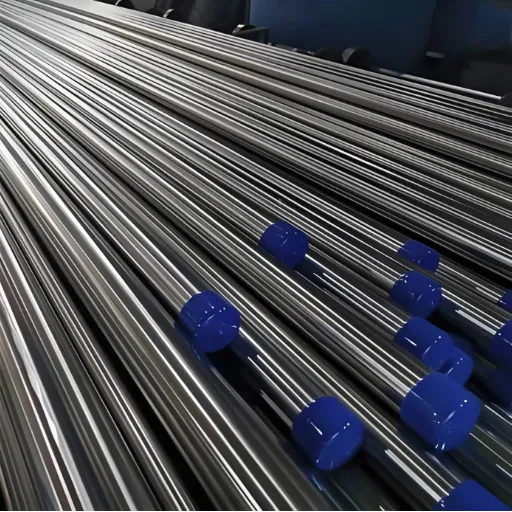
Factors to Consider: OD and Wall Thickness
When it comes to bright-annealed tubing select, the outer diameter (OD) and the wall thickness along with these, basically the performance and the application suitability, are among the most critical factors. OD influences the size of the tube and its fitting possibility with the existing systems, while the wall thickness determines the tubing’s fortitude, pressure rating, and flexibility. For such precise industries as pharmaceutical and food processing, it is very important to maintain consistent OD and wall thickness to ensure the correct fitting and connecting. Moreover, the wall tubing which is thinner in diameter might be more pliable but at the same time it could lose its ability to withstand high pressure situations.
📐 Selection Criteria Guide
The data trend shows that the industries are very much considering tighter tolerances in OD and wall thickness retroactively during their selection process. This is merely because of the need to comply with demanding standards aimed at increasing efficiency and enhancing safety, especially in high-precision applications. If businesses come decide to closely look at these parameters with respect to the operational requirements of the application, they can pick the best bright annealed tubing for their needs.
Maintenance Requirements
To ensure the longevity and optimal performance of bright annealed tubing during high-precision and high-pressure uses it is necessary to apply maintenance regularly. Wear, corrosion, and damage should be detected through regular inspections. Using non-abrasive cleaners to clean the tubing helps maintain the smooth interior surface, which in turn, is important for keeping flow efficiency. Likewise, monitoring the environmental condition is key since exposure to hard chemicals or extreme temperatures can ruin the tubing’s strength over time. It is a known fact that putting a scheduled maintenance plan in place reduces the possibility of unexpected failures and at the same time improves the industry standards for safety and efficiency.
🔧 Maintenance Best Practices
- Regular Inspections: Check for wear, corrosion, and damage every 6 months minimum
- Proper Cleaning: Use only non-abrasive cleaners to preserve surface finish
- Environmental Monitoring: Track exposure to chemicals and temperature extremes
- Scheduled Maintenance: Implement proactive maintenance plans
- Documentation: Keep records of inspections and maintenance activities
Common Questions and Concerns
The specific use case, operational conditions, and the materials involved will all be determining factors on how often tubing will be inspected. Nonetheless, as a rule of thumb, industry experts suggest checking the tubing systems for wear, corrosion, or blockages at least once per six-month period. More frequent inspections are likely to be needed if the systems are in high-demand or in extreme environments since degradation might happen quicker. The rising concern of neglecting the installation of proactive inspections gleaned from the search data indicates the necessity to have regular evaluations so that costly disruptions and safety compliance can be prevented and hence, assured.
⏰ Inspection Frequency Guidelines
Standard Environments:
Inspect every 6 months for wear, corrosion, or blockages
High-Demand or Extreme Environments:
Inspect quarterly or monthly as degradation occurs faster
The major traits of the bright annealed tubing are the mirror-like surface, the exact dimensional tolerances, and the increased mechanical properties. It is used extensively wherever sanitary conditions are a must or where aesthetic appeal is desired, such as in the pharmaceutical, food processing, and instrumentation industries. Moreover, this kind of tubing gives a superb performance against tarnishing and keeps its strength even under harsh conditions, therefore making it a dependable alternative for both functional and decorative applications.
Difference Between Annealed and Bright Annealed
Annealed and bright annealed refer to two different metals’ heat treatment processes that provide the same results but through different methods. Annealing entails heating the metal to a certain temperature and then gradually cooling it down to relieve internal stresses among the atoms, thereby improving the ductility, and refining the material’s microstructure. Usually, this process is performed in slightly oxidizing conditions, which often results in a somewhat discolored or matte surface finish.
Conversely, the bright annealing process is more controlled and is done in a highly controlled atmosphere, that is either a vacuum or an inert gas (e.g. hydrogen). This totally stops the oxidization process, thus retaining the metal’s original reflective and shiny surface. The bright annealing process enhances the surface finish and at the same time keeps all the internal structural advantages of regular annealing, thus making the material suitable for applications that require both a flawless look and optimal mechanical properties.
Both methods seek to enhance the material’s properties, but the bright annealed tubing is particularly ideal for the food processing or pharmaceutical industry where cleanliness and aesthetic are very important.
Applications of Bright Annealed Tubing
Bright annealed tubing is used widely throughout different industries owing to its first-rate surface finish, resistance to corrosion, and mechanical strength. One of the main applications is in the food processing industry, where hygiene and cleanliness are of the utmost importance. The bright annealed tubing’s smoothness and polish reduce the likelihood of contamination, thus making it fit to comply with very strict food safety regulations.
🏭 Industry Applications
🍽️ Food Processing
Smooth surface reduces contamination risk and meets strict food safety regulations
💊 Pharmaceutical
Non-reactive surface maintains purity and integrity of sensitive compounds
🔬 Semiconductor
Flawless finishes for controlled environments where precision is critical
🏗️ Architecture & Design
Aesthetic appeal for modern construction, handrails, and decorative installations
Likewise, in the pharmaceutical industry, bright annealed tubing is an indispensable component in the manufacturing and transferring of sensitive compounds. Its non-reactive surface carries out no chemical interaction, thus the purity and integrity of the products are maintained. The semiconductor industry is also one of the sectors where this material is used since they utilize its flawless finishes both internally and externally in their controlled environments, as any contamination there would negatively affect the precision. Moreover, bright annealed tubing for its aesthetic merits has been introduced into the world of architecture, and design thereby aiding modern construction projects, handrails, and decorative installations. Bright annealed tubing is highly functional and at the same time caters to the design aspect which is a reason for its fast gaining popularity across industries.
The Manufacturing Process of Bright Annealed Tubing

Annealing Process at a Glance
The annealing method is a careful heat treatment process that can change the physical properties of a material (usually metal) as well as its chemical ones in some cases. For bright annealed tubing, the process consists of heating the tubing to a set temperature in most cases 1,800°F to 2,100°F (1,000°C to 1,150°C) and then rapidly cooling it in a controlled inert atmosphere such as hydrogen or nitrogen to prevent oxidation during the cooling process. This accurate heating and cooling in the right combination lead to reflective surface quality and better ductility and toughness in the tubing.
🌡️ Temperature Range for Bright Annealing
Precise temperature control in inert atmosphere ensures optimal results
The process of annealing, by getting rid of internal stresses and modifying the grain structure, not only improves the tubing’s corrosion resistance but also its mechanical properties, thus it is considered for the applications of manufacturing in the pharmaceutical, food, and aerospace industries. The use of modern technology in manufacturing methods and the combination of precise temperature control plus gas-free environments have further made the annealing process more efficient and consistent. These innovations allow manufacturers to live up to tight quality and performance standards, so the bright annealed tubing keeps being the benchmark for both durability and aesthetic success.
Manufacturing Bright Annealed Tubing Steps
The production of bright annealed tubing passes through a series of steps which require high accuracy and serve to secure the quality and performance of the product according to the industry standards:
⚙️ Manufacturing Process: 6 Critical Steps
- Tube Preparation: Stainless steel is shaped into tubes via extrusion or similar methods. Material undergoes strict composition and quality testing to ensure durability and corrosion resistance.
- Cold Working: Tube goes through cold drawing or cold rolling to reduce diameter and wall thickness while improving mechanical properties and surface quality.
- Cleaning and Descaling: Tubes are thoroughly cleaned to remove dust, oil, and oxide scales accumulated during processing, providing a clean surface for treatment.
- Bright Annealing: Cleaned tubes are placed in a furnace with controlled atmosphere at high temperature. Inert or vacuum atmosphere prevents oxidation while relieving stress and restoring ductility.
- Quenching: Tubes are rapidly cooled in inert atmosphere to retain desired mechanical and metallurgical properties plus polished appearance.
- Inspection and Quality Control: Final inspection includes dimensional testing, surface quality checks, and mechanical property verification to ensure compliance with requirements.
The use of modern technologies, such as state-of-the-art temperature regulation systems and automated equipment, greatly contributes to the improvement of accuracy and uniformity in the production steps. The focus on quality at each point enables the brightness of annealed tubing to satisfy the requirements of healthcare and aerospace sectors.
Quality Control Steps
The quality control that is employed for the production of bright annealed tubing is based on a very organized and methodical approach that guarantees continuous product excellence throughout the entire process. By using the latest inspection technology, manufacturers are performing dimensional accuracy checks, corrosion resistance testing, and surface roughness analysis all together to comply with very high industry standards. Industries still give priority to ISO 9001 and ASTM compliance as the main quality indicators. Thus, by adopting the manufacturing processes in conformity with these worldwide acknowledged standards, businesses can ensure that their output is always the same and therefore, the society can confidently trust them in critical applications.
🔍 Quality Control Checklist
- ✓ Dimensional accuracy verification
- ✓ Corrosion resistance testing
- ✓ Surface roughness analysis
- ✓ ISO 9001 compliance verification
- ✓ ASTM standards adherence
- ✓ Mechanical properties testing
Properties and Benefits of Bright Annealed Tubing

Durability and Strength
One of the major factors that contribute to the brightness and the wider acceptance of annealed tubing is the high durability and strength of the material that can be drawn and fabricated into even brighter and more consumer-friendly forms. Presently, bright annealed tubing ranks among the highest choices in industries like power generation and healthcare, to name a few, where still the ‘the strongest’ is needed. Per its manufacturing process, the major strength comes from controlled annealing in an oxygen-free environment to successfully reduce stress and increase mechanical properties. The process described yields tough metal with a smooth/metallic texture that is resistant to corrosion/making it good for extreme conditions without any risk to integrity. These pros especially in terms of health care, aerospace, and energy bright annealed tubing has not only been but still is the most suitable choice in certain sectors with demanding applications and industries.
Corrosion Resistance
The feature that bright annealed tubing is one of the most significant in industrial applications is its lightweight and superior resistance to corrosion, the major reason being the tube has gone through the unique process of melting then cleaning the surface with gas. The atmospherically controlled annealing resulted in an oxide and corrosion resistant’s smooth and even surface. The latest report states that the tubing is extremely tolerant of the environments where moisture, high humidity, and chemicals are present thus making it a perfect candidate for pharmaceuticals, chemical processing, and marine applications. All these factors lead to a far longer lifespan, lower maintenance costs, and higher reliability in mission-critical applications.
🛡️ Corrosion Resistance Benefits
Moisture Tolerant
Excellent performance in humid environments
Chemical Resistant
Withstands aggressive chemical exposure
Frequently Asked Questions
What exactly is bright annealed tubing and what are its uses?
Bright annealed tubing, also known as BA tubes, is a kind of stainless steel tube that goes through a particular process of bright annealing. The bright annealing procedure is mainly done to improve its mechanical properties and corrosion resistance by controlling the environment under which the tubing is heated, often using a reducing gas. Bright annealed tubing’s shiny and smooth surface provides an excellent quality for hygienic applications like beverage industries where purity is the utmost concern. Semiconductor manufacturing and various industrial applications are among the other areas which benefit from these tubes due to the high performance they offer. Being seamless indeed adds to the durability and strength of these tubes.
What differentiates tubing that is annealed from one that is bright annealed?
The major distinction between annealed and bright annealed tubing originates from both the annealing process and the condition of the surface finish produced. Both of these types of tubing are subjected to heat treatment, but bright annealed tubing is subjected to a protective atmosphere which minimizes any oxidation of the surface, thus resulting in a more polished and even more beautiful finish. The latter is also the case for bright annealed tubing that can be used in applications requiring excellent corrosion resistance in corrosive environments. Besides, bright annealed tubes are usually more weldable and uniform than standard annealed tubes. The selection frequently relies on the criteria of the application, variations in alloy composition, and the necessity for improved visual features.
What are the effects of annealing on tubing properties?
Annealing is a heat treatment that dramatically changes the properties of tubing. The process is done to eliminate residual stresses, to increase ductility, and to make the steel not so brittle; these are the main features that are desirable in steel tubes to be granted the right to play their part in the world of tubing. For bright annealed tubing, the identical process is done in the protection of a controlled environment and is free from contamination and other negative influences and creates a clean and uniform finish. Thus, bright annealed tubing has the shining advantage of high corrosion resistance and superior mechanical properties, which are the keys to unlocking the door of their use in beverage and semiconductor manufacturing industries. Furthermore, the annealing process is also a factor in weldability improvement of the tubing thus making it easier to join, in the first place, wherever needed in the different applications. In the end, such a tiny thing as the specific conditions of the annealing process can have a huge impact on the final characteristics of the tubing.
Why is the outer diameter (OD) so important in the tubing?
Of all the dimensions, the outer diameter (OD) of tubing is probably the most important and critical one as it makes the tubing compatible or otherwise, with the fittings and other components within the piping systems. In the case of bright annealed tubing, due to its being used in precision applications that require very close tolerances, the precise measurement of OD is a fundamental issue to be dealt with in order to arrive at a good fit and proper functioning. Furthermore, the OD has an effect on the strength of the tubing, with thicker walls generally possessing better resistance to outside pressure and possible defects like pitting corrosion, so they are stronger and able to withstand higher pressures. In industries like semiconductor manufacturing and beverage production where cleanliness and precision are critical, the OD is one of the most important aspects to be considered when choosing the right tubing. Moreover, different OD sizes can lead to different flow rates and to different efficiencies of the systems using them.
What are the advantages of A270 bright annealed tubing?
A270 bright annealed tubing is made for sanitary applications basically, therefore its use is very advantageous in industries that focus on hygiene, such as the food and beverage industry, for example. While A270 is mainly made of stainless steel, it is very resistant to corrosion and is also very easy to maintain. The bright annealing process makes the surface even more shiny and smooth, and thus bacteria and impurities are trapped very little, if at all. Apart from that, A270 tubing is very weldable which reduces the difficulty occurring during installation and repair. Its constancy and great mechanical properties also make it a very good option for applications where reliability and durability are needed that are especially in the case of environments where corrosive substances are present.
🎯 Key Takeaways
- Bright annealing creates superior surface finish: The controlled atmosphere process prevents oxidation, resulting in a mirror-like, reflective surface
- Temperature precision is critical: Annealing occurs at 1,800°F to 2,100°F (1,000°C to 1,150°C) in inert atmospheres
- Seamless construction eliminates weak points: No welds means uniform strength and better contamination resistance
- Ideal for sanitary applications: Smooth surface prevents bacterial buildup in food processing and pharmaceutical industries
- OD and wall thickness are crucial: These parameters determine system compatibility, pressure rating, and flexibility
- Long-term cost benefits: Higher initial investment pays off through reduced maintenance and extended lifespan
- Regular maintenance required: Inspect every 6 months minimum, more frequently in demanding environments
Conclusion
Bright annealed tubing represents the pinnacle of stainless steel tubing technology, combining exceptional mechanical properties with an unparalleled surface finish. Through the carefully controlled annealing process conducted in oxygen-free environments, manufacturers create tubing that excels in the most demanding applications across pharmaceuticals, food processing, semiconductors, and beyond.
The mirror-like surface finish is not merely aesthetic—it serves critical functional purposes by preventing contamination, reducing friction, and ensuring compliance with strict hygiene standards. When combined with seamless construction, bright annealed tubing offers structural integrity that welded alternatives simply cannot match, making it the preferred choice for high-pressure applications where failure is not an option.
While the initial investment in bright annealed tubing may be higher than standard alternatives, the long-term benefits are undeniable. Reduced maintenance requirements, extended service life, lower contamination risks, and superior corrosion resistance translate into significant cost savings over the tubing’s lifetime. For industries where precision, cleanliness, and reliability are paramount, bright annealed tubing is not just an option—it’s an essential component of operational excellence.
As manufacturing technologies continue to advance and quality standards become increasingly stringent, bright annealed tubing will remain at the forefront of industrial piping solutions. By understanding its properties, manufacturing process, and appropriate applications, you can make informed decisions that ensure optimal performance, safety, and value for your specific needs.
📚 Reference Sources
- University of Virginia: A product guide discussing steel tubing and pipe, including bright annealed options and their technical specifications. Product Guide – Steel Tubing & Pipe
- University of North Carolina: Documentation on stainless steel tubing, including bright annealed and pickled finishes, with details on material types and applications. Bright Annealed Tubing Specifications
- University of Georgia: Information on the bright annealed finish, highlighting its clean, shiny appearance and suitability for various applications. Bright Annealed Flat Metal Guide

